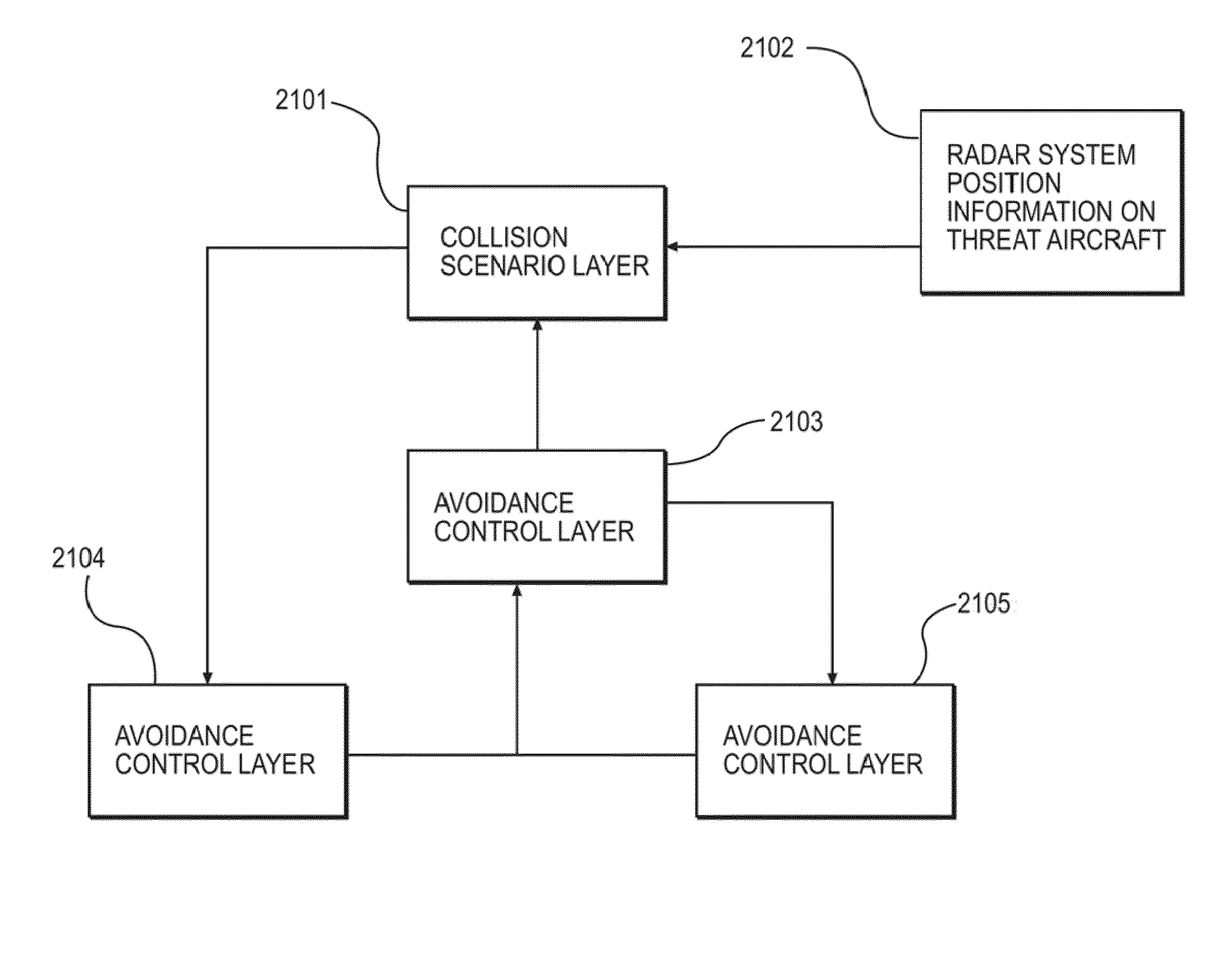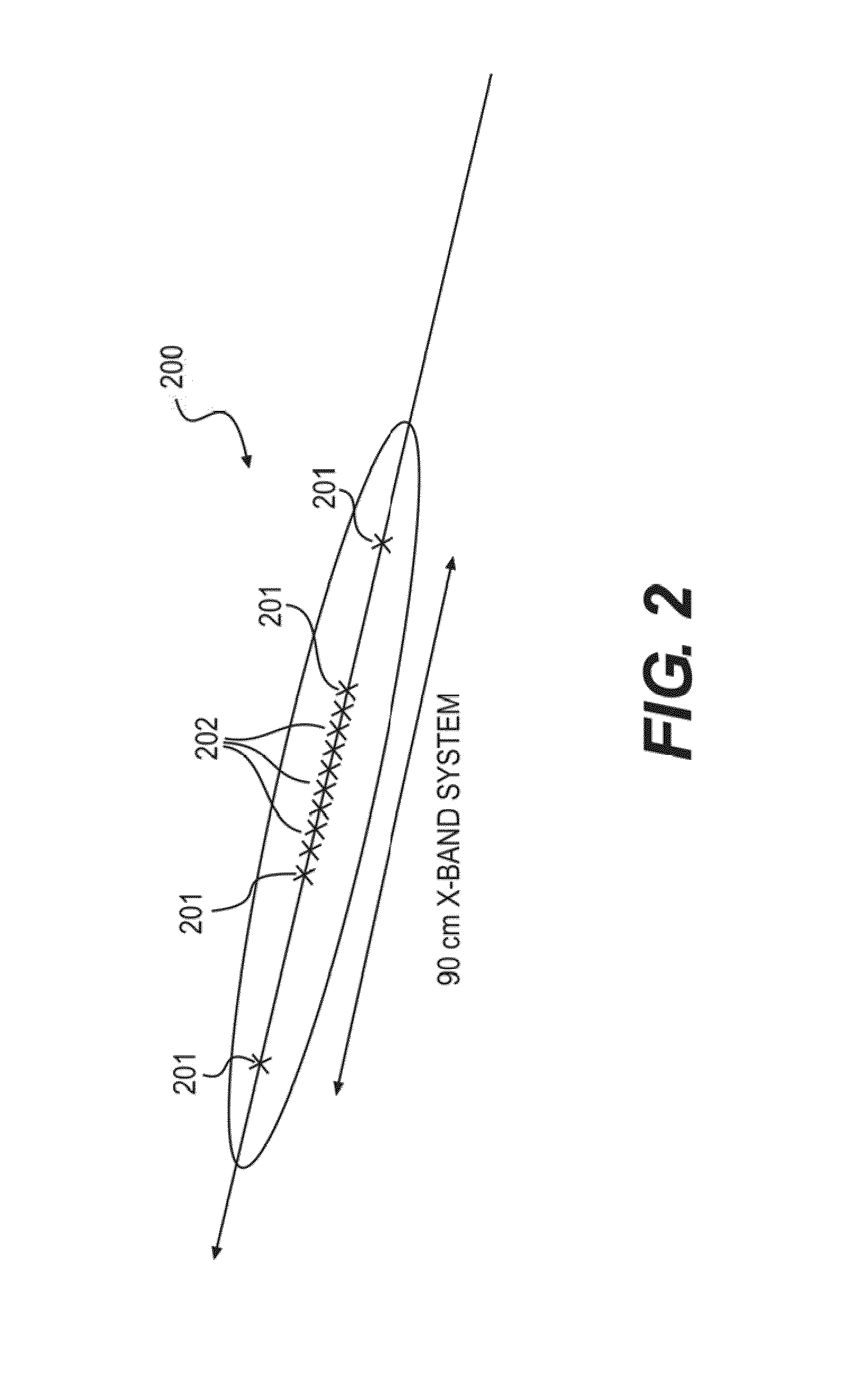Collision avoidance system and method
a technology of collision avoidance and avoidance system, which is applied in the direction of distance measurement, instruments, and using reradiation, can solve the problems that systems are not readily suited to use in unmanned air vehicles and the like, and achieve the effects of improving range resolution, avoiding and minimizing the effect of doppler on pulse compression
- Summary
- Abstract
- Description
- Claims
- Application Information
AI Technical Summary
Benefits of technology
Problems solved by technology
Method used
Image
Examples
Embodiment Construction
[0084]FIG. 1 depicts the basic geometry of a collision 100 between two vehicles. In this instance a first aircraft 101 on a first flight path 103 and a second unmanned aircraft 102 on a second flight path 104. The line of sight between each aircraft remains constant as does the relative angle α106. As the aircraft continue along their respective flight paths the range 105 between the two is reduced at a constant rate and it is this constant reduction in range or constant relative angle α106 that indicates a potential collision threat 107. Thus in order to avoid the collision 107 one of the aircraft 102 needs to alter course (i.e. change the relative angle α106 between the two). However the aircraft cannot just simply alter tact, any course correction must be negotiated in accordance with the rules for a given airspace.
[0085]As discussed above, one of the factors inhibiting development and usage of unmanned vehicles is the lack of a collision avoidance system that provides such vehic...
PUM
 Login to View More
Login to View More Abstract
Description
Claims
Application Information
 Login to View More
Login to View More - R&D
- Intellectual Property
- Life Sciences
- Materials
- Tech Scout
- Unparalleled Data Quality
- Higher Quality Content
- 60% Fewer Hallucinations
Browse by: Latest US Patents, China's latest patents, Technical Efficacy Thesaurus, Application Domain, Technology Topic, Popular Technical Reports.
© 2025 PatSnap. All rights reserved.Legal|Privacy policy|Modern Slavery Act Transparency Statement|Sitemap|About US| Contact US: help@patsnap.com



